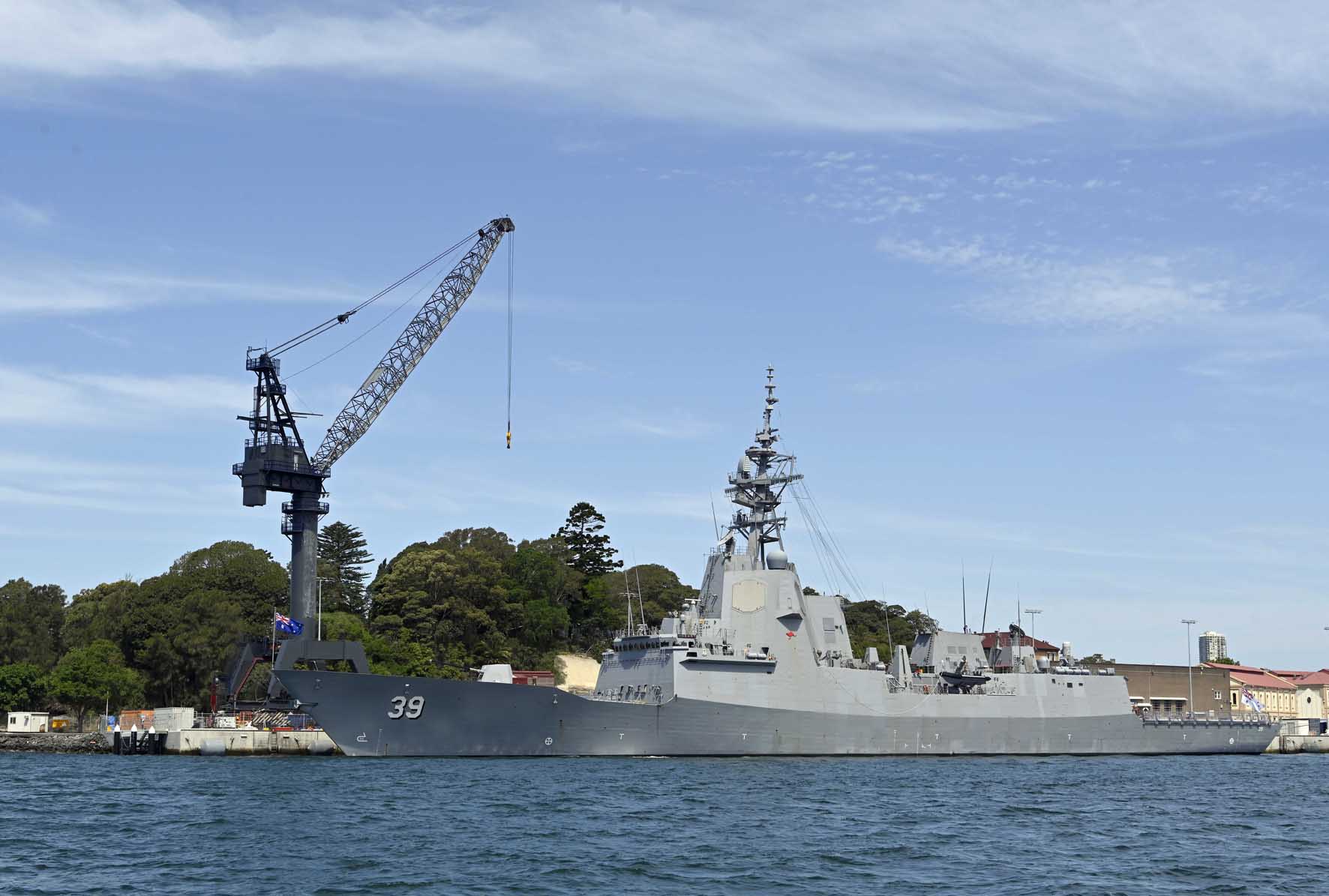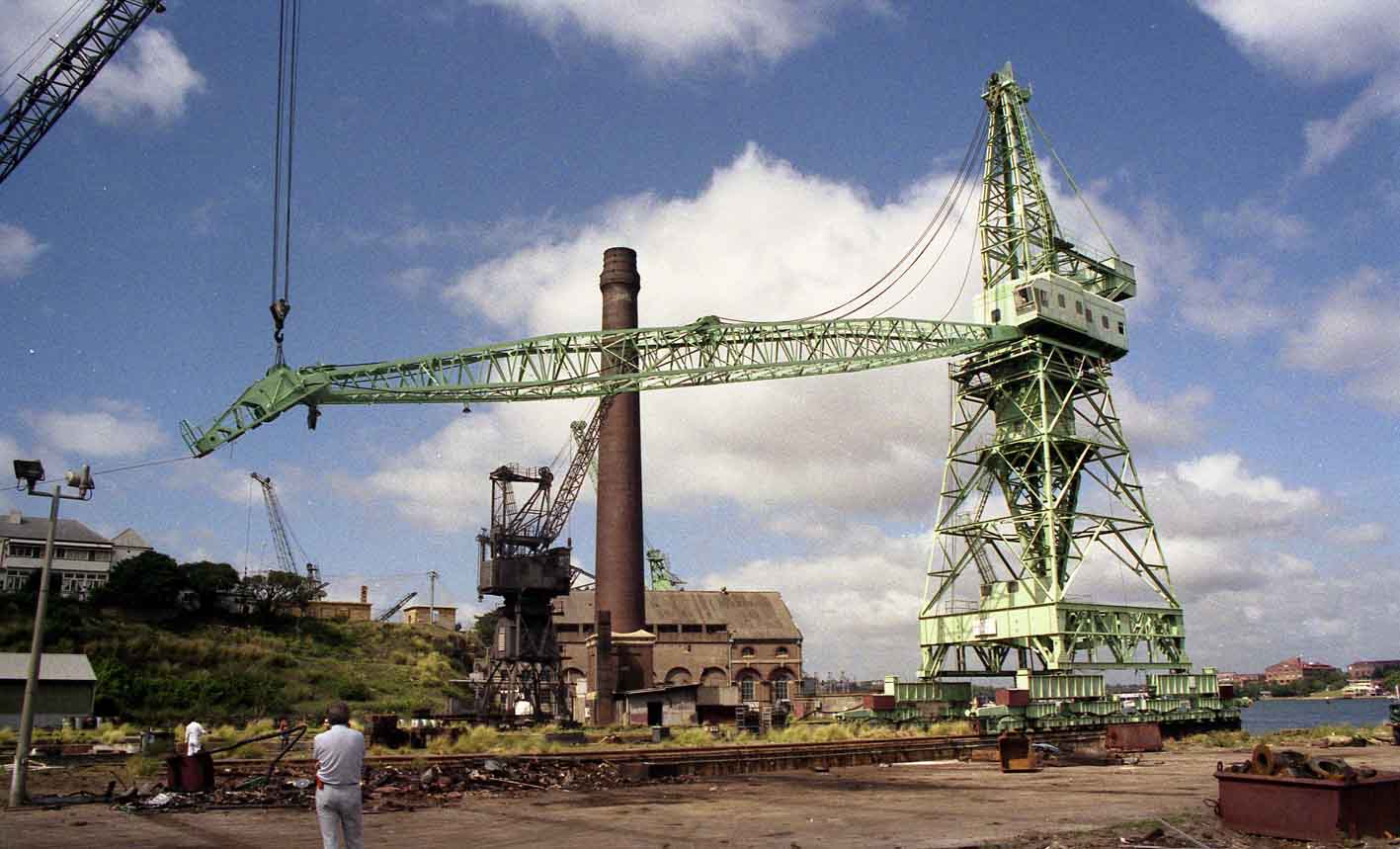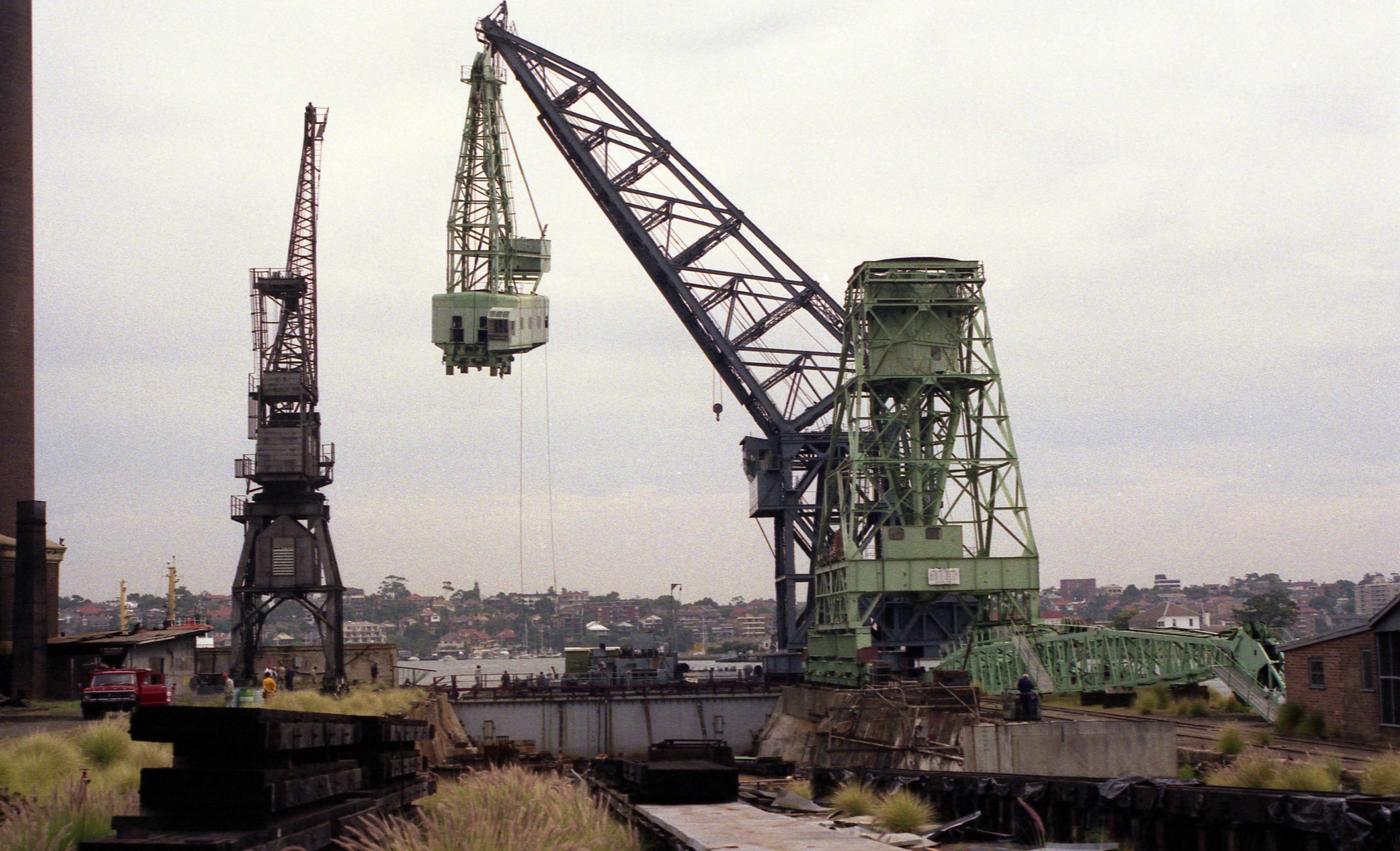By John Jeremy
Cranes are a regular feature of Sydney’s skyline, particularly the many construction cranes which, at a glance, reveal the state of the construction industry in Australia’s largest city. These cranes are, however transient. They are used for a project and move on — to another project in another state, city or even overseas. More permanent are the cranes which serve the essential industry of the port — in its dockyards and, in the past, its shipyards.
Most of us remember well the famous 250 ton Hammerhead crane (actually a cantilever crane) which served the RAN at Garden Island for many decades after World War II. Its familiar silhouette is now gone, as is that of another well-known Sydney icon, the 150-ton lift floating crane Titan which was a familiar sight around Sydney Harbour for seven decades.
Owned by the RAN, it was completed at the then Commonwealth Naval Dockyard at Cockatoo Island in 1919. When the dockyard there was finally closed in 1992, the crane was sold. After changing hands, government approval was given for the moveable heritage item to be temporarily exported to Singapore. That signalled the end of the crane which capsized and sank off the coast of NSW on the way north in 1992.
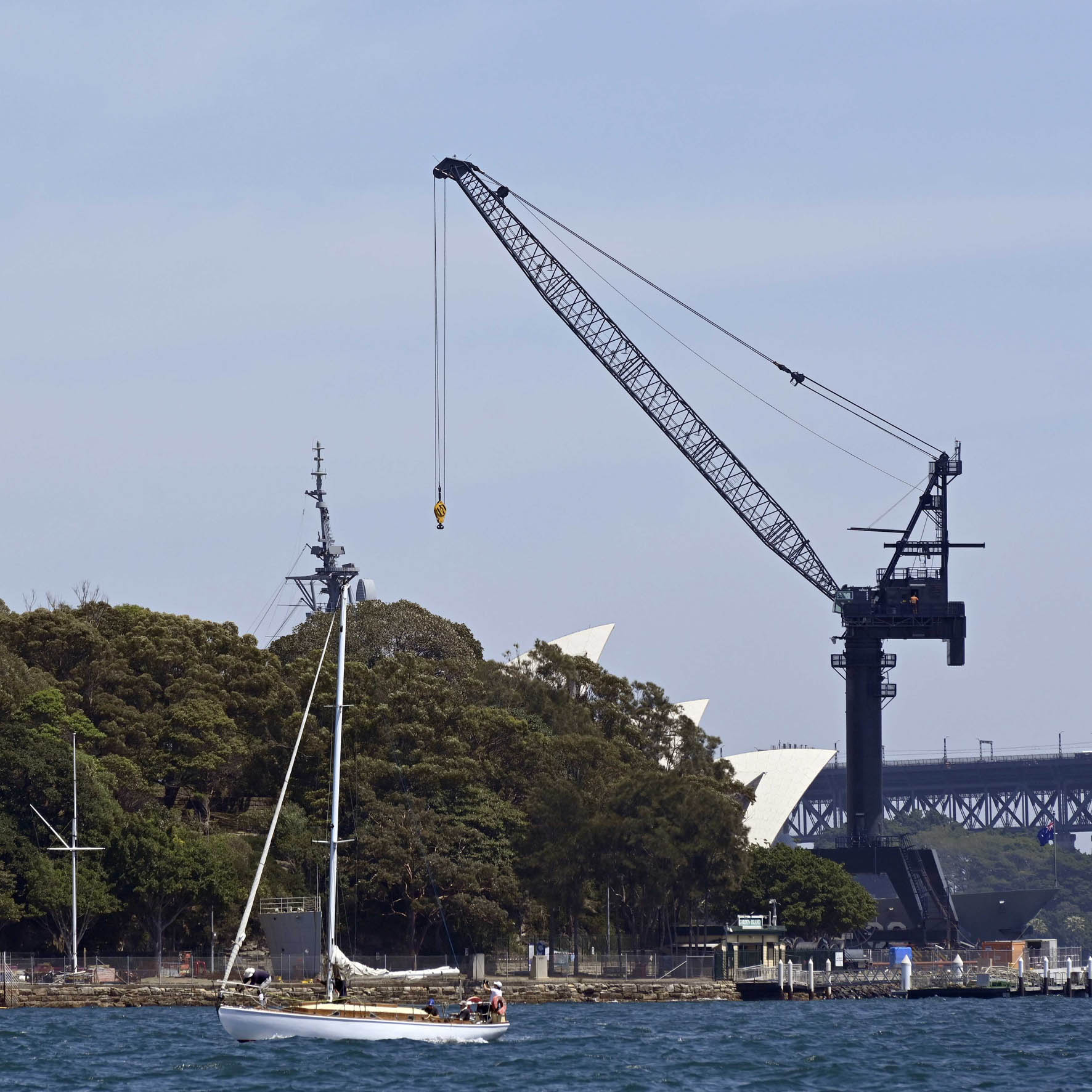
A new crane has now appeared on Sydney’s skyline — a permanent addition to the assets of the Garden Island Defence Precinct (aka Garden Island Dockyard). As a final part of Phase One of the Garden Island (East) Critical Infrastructure Recovery Program (what you and I might call modernisation) a new 100-t lift portal crane has been erected on the new wharf constructed as part of this project, now designated as FBE 11, 12 and 13. The new crane, which can travel the length of the new wharf, has height and outreach to enable it to reach over HMA Ships Canberra and Adelaide, ensuring that it will be easily noticed by residents and visitors to Sydney alike.
Supplied by Favelle Favco, the crane is similar in design to the two cranes which serve the Captain Cook Graving Dock. The new crane can lift 100 t at a radius of 6.5 to 17.5 m, 64 t at 34.1 m and 27.5 t at 49.8 m. It will be a significant asset for the dockyard, reducing the need to hire expensive mobile cranes which take up valuable space and have outreach limitations.
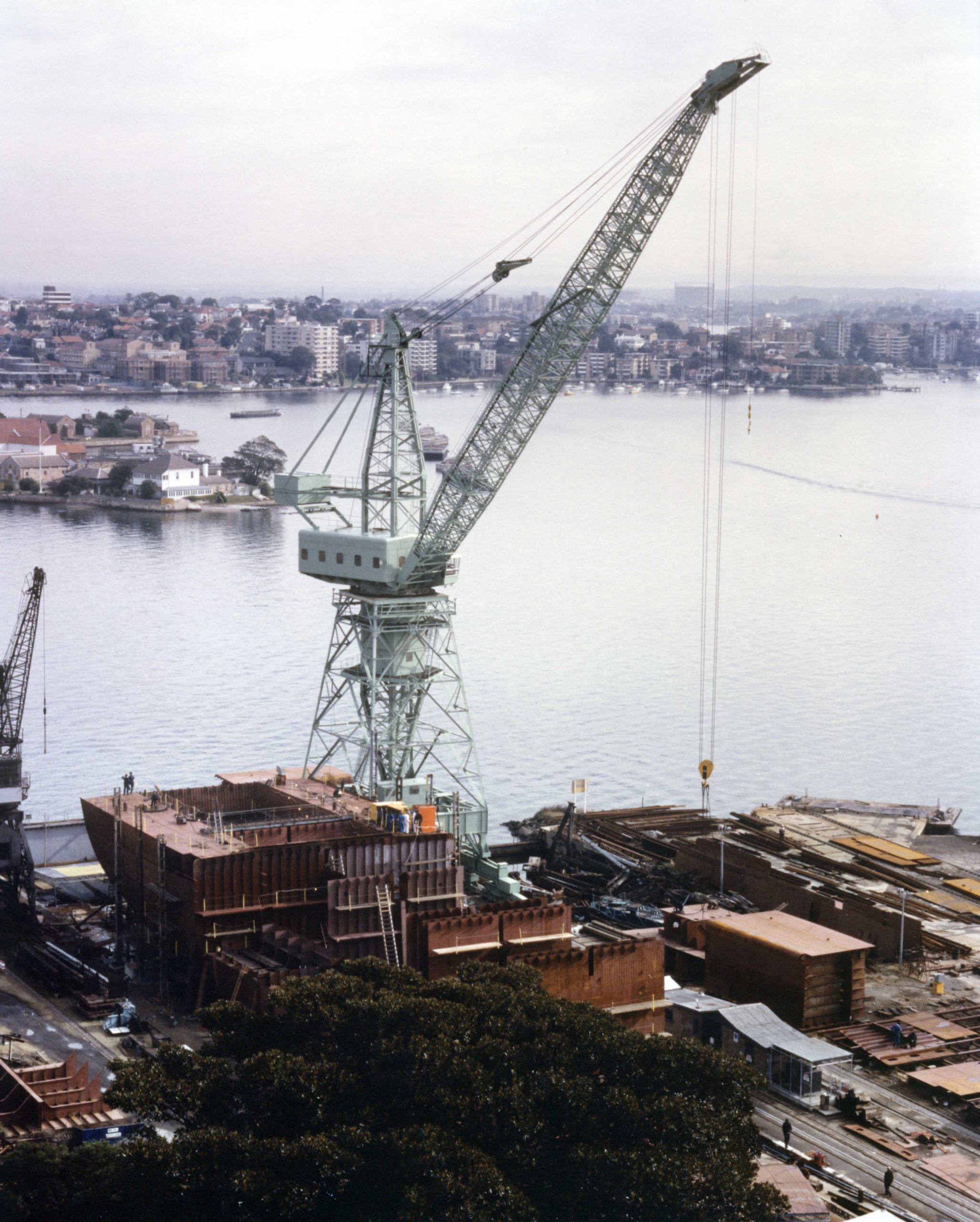
The new crane illustrates how modern design has reduced the mass of the crane’s structure. It is interesting to compare the crane to another very-prominent Sydney landmark of the 1980s, the 50-ton lift Butters shipyard crane which helped build HMAS Success at Cockatoo Island.
At the outset of the project at the dockyard it had been recognised that the craneage at No. 1 slipway at Cockatoo Island was inadequate for a build strategy incorporating three-dimensional partly fitted-out modules and plans were made to acquire two substantial mobile cranes to support the existing 1947-vintage 40-ton Whirley crane.
Mobile cranes are widely used in the construction industry and in small shipbuilding, but have significant disadvantages for the construction of large ships. The area surrounding the ship construction site needs to be clear, flat and sufficiently strong to allow the cranes to travel, particularly when carrying a load (which is in any case undesirable), and if any useful outreach is to be achieved, the cranes need to be very large.
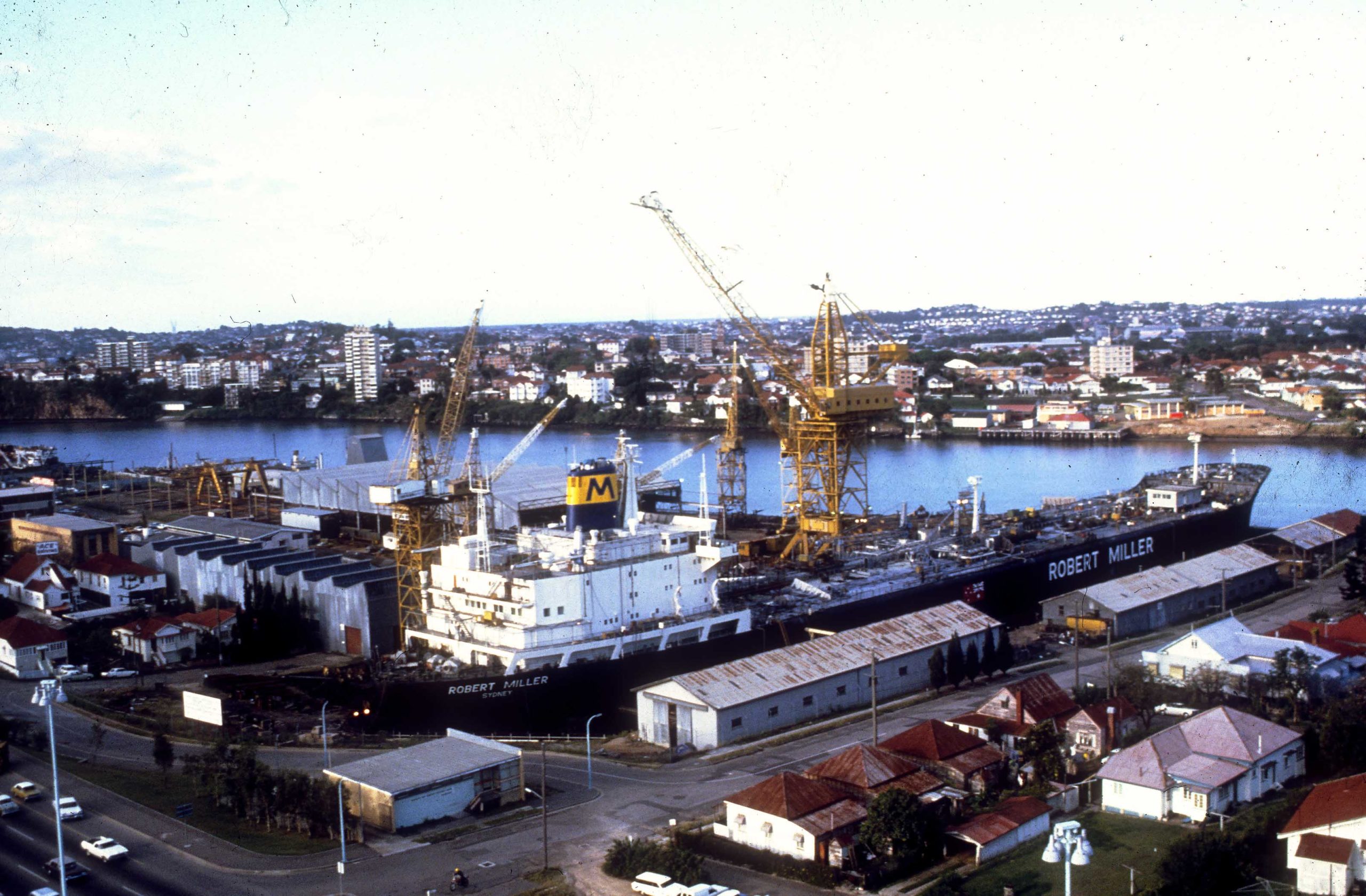
Fortunately, two existing large shipyard cranes had become available as a result of the run-down of large commercial shipbuilding in Australia. One was a 100-ton capacity Butters crane at the Evans Deakin shipyard at Kangaroo Point in Brisbane and the other was a 50-ton Butters crane from the recently-closed BHP shipyard at Whyalla in South Australia. The 100-ton crane proved to be far too big to be accommodated in the available space but the 50-ton crane from Whyalla could fit with one additional crane track and improved power supplies. The crane, which was about 18 years old, was purchased from BHP and shipped to Sydney in sections for re-erection on Cockatoo Island.
The Butters crane could lift 40 tons at a radius of 40 m and 50 tons at 30.6 m, sufficient to cover the entire slipway and enabled lifts, in conjunction with the Whirley, of up to 90 tons on the centreline of the slipway. It proved to be immensely valuable during the construction of the ship.
One interesting feature of the Butters crane was its 110 foot (33 m) long jib. It was constructed of aluminium and, when topped-up was clearly visible on the western Sydney skyline. Its exposed location contributed to a serious accident in early 1984, shortly before HMAS Success was launched.
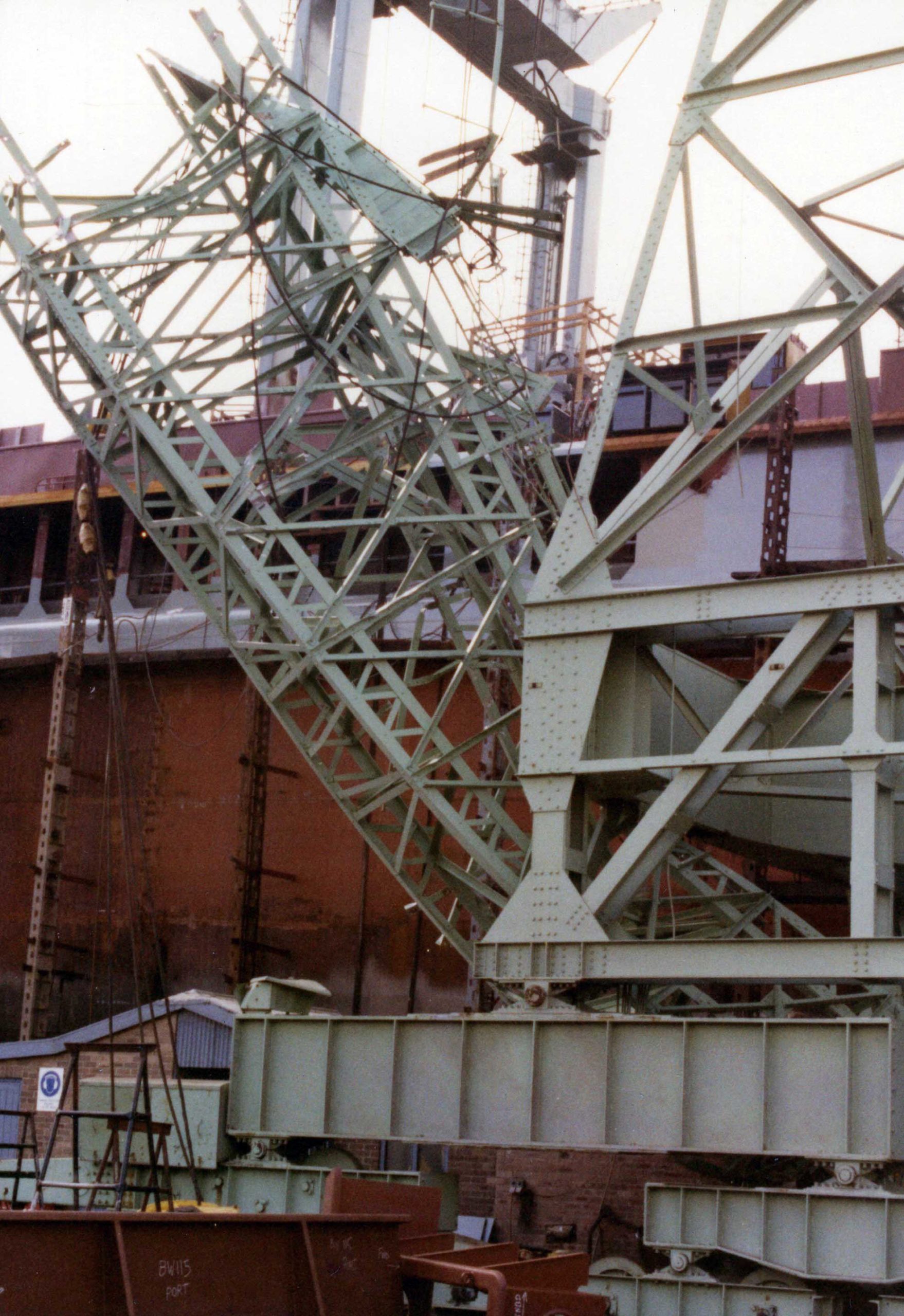
The crane was being used one evening as a major electrical storm was brewing in the west. As he was needed to operate a crane in one of the workshops, the crane driver parked the crane at the nib of the slipway with the brakes on, but it was not dogged down to the tracks. The storm hit as he was returning to the shipyard and he took shelter near the head of the slipway where he could watch the unfolding drama. A very strong wind gust struck the Butters, lifting the jib vertical where it broke in two, with the severed portion hitting the ground between the tracks, still attached to the crane. Moreover, the wind was sufficient to move several hundred tons of crane against its brakes along the tracks until the wreckage of the jib struck the substation located about half way to the head of the slipway. The crane fortunately stopped after giving the duty electrician, sheltering in the substation, a considerable fright. Fortunately, no one was hurt and crane wreckage did not hit the ship.
About one million dollars’ worth of damage was done to the crane which was, fortunately, fully insured. A new jib, about three metres shorter, was built of steel to replace the shattered aluminium one. The crane was also overhauled and the last remnants of Whyalla dust not found during its reassembly in Sydney removed.
Not long after these events the Government made the decision to close Cockatoo Dockyard and the Butters crane saw little further service. When the dockyard closed the crane was offered to Garden Island Dockyard for the cost of its relocation, but nothing came of the proposal. Sadly, a fine shipbuilding crane, in excellent condition, had to be cut up for scrap and a prominent feature of the Sydney skyline was no more.
The new crane at Garden Island can lift more than the Butters crane but its modern design has produced an elegant and simple structure. Nevertheless it, too, is exposed to the Sydney weather which can occasionally prove violent. Hopefully the incident of 1984 will never be repeated.
